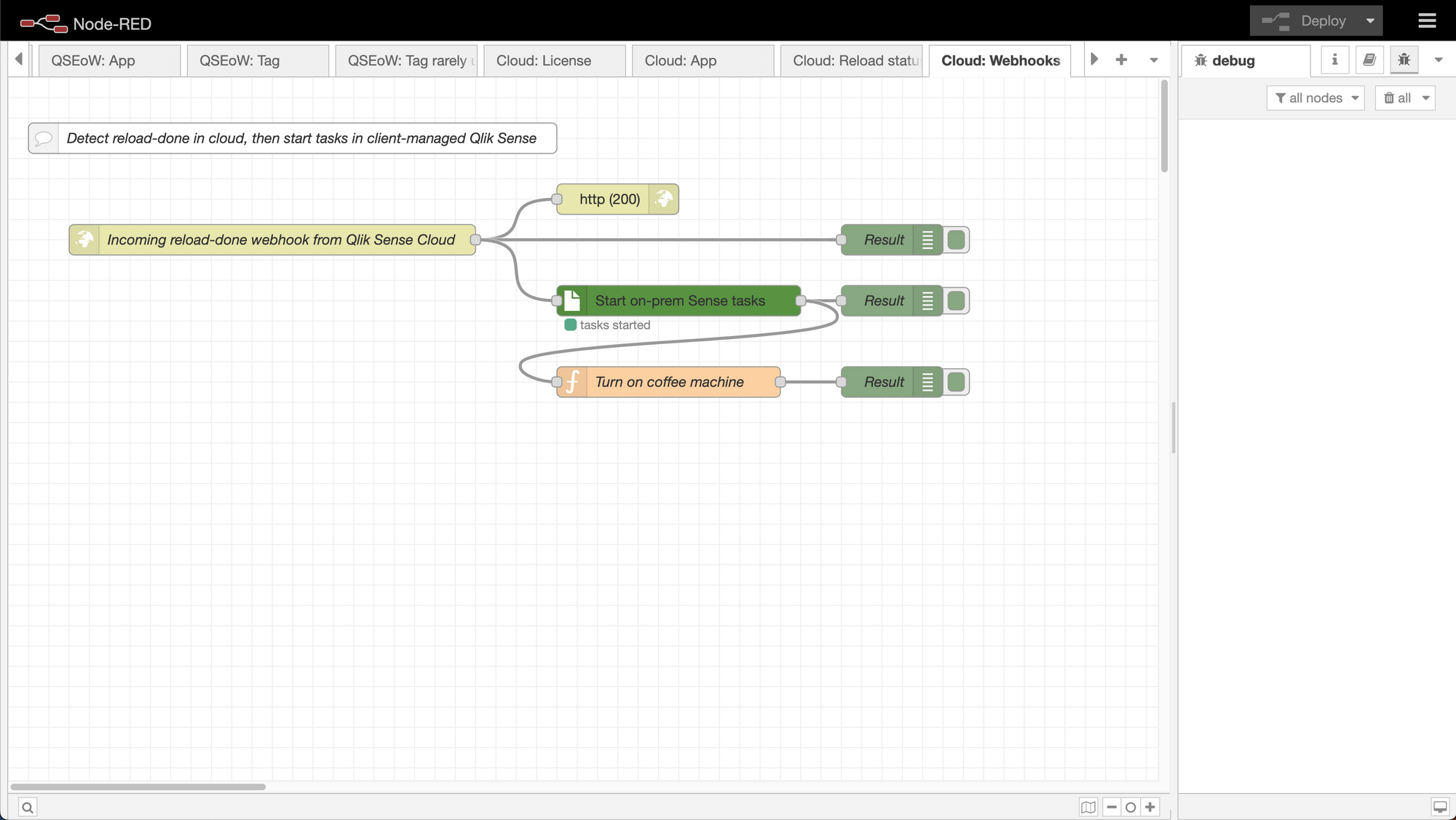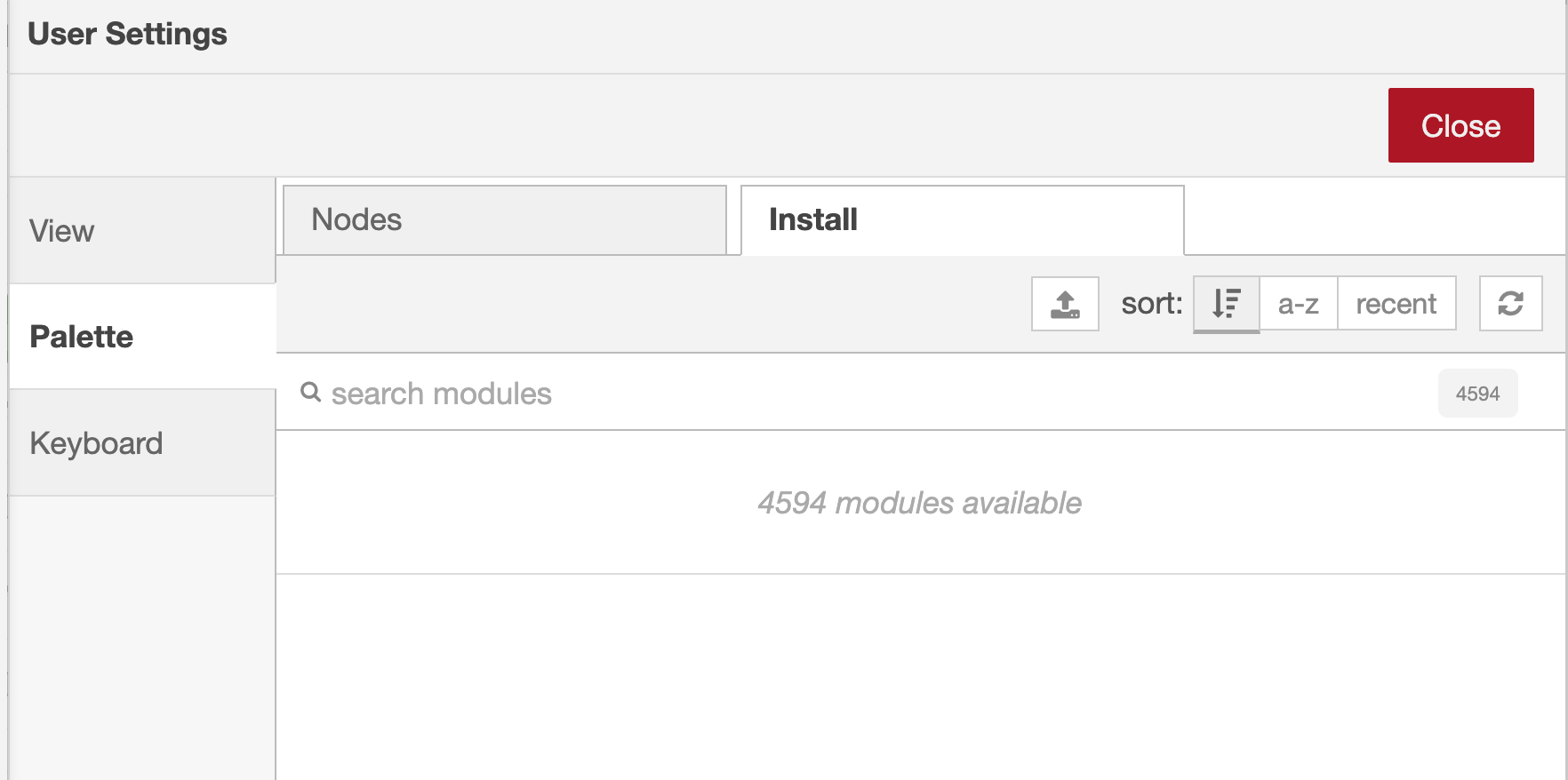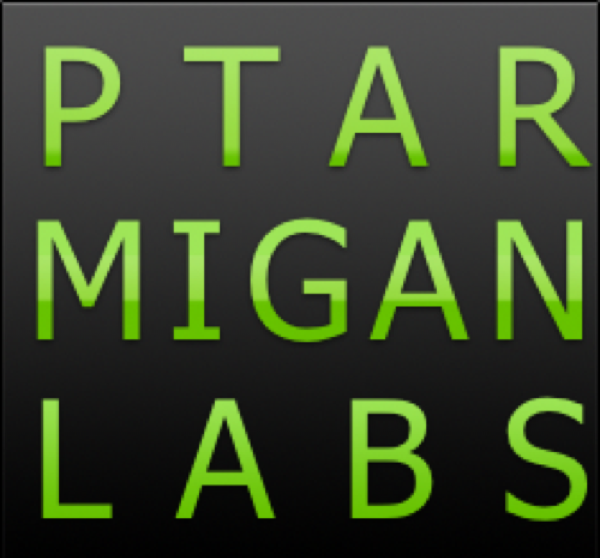Ctrl-Q NR: Low-code tools for Qlik Sense
Ctrl-Q NR is a set of Node-RED nodes that make it easy to use both Qlik Sense Cloud and client-managed Qlik Sense from within the low-code Node-RED platform.

Something that's been brewing for quite some time has matured a bit during past couple of weeks...
Some 4-5 years ago - long before the Qlik Cloud automation tools existed - I did a first proof-of-concept of adding Qlik Sense (client-managed) nodes to Node-RED.
It worked ok, it was a cool tech demo but nothing more came out of it.
Fast forward to 2023 and we have a mature Qlik Sense Cloud product that includes its own low-code product, Qlik Application Automation.
Two weeks ago I did as refresh of that old proof-of-concept from 2018 and the result is now (tentatively) called "Ctrl-Q NR".
So why another entry in this space?
After all, Qlik already offers a great low-code environment as part of Qlik Sense Cloud - why creating another, similar concept?
There are several reasons.
The Node-RED ecosystem
Node-RED (Wikipedia link) was created around 2015 by IBM and was open sourced in 2016.
By now it is mature and very stable. Some people argue that you should not run production workloads on tools like Node-RED and while there is of course some truth in that, it is also a fact that I have personally used Node-RED for 24/7 services for the past 4-5 years without ANY issues whatsoever. It's amazingly stable.
Equally important is the library of more than 4000 modules created by third parties, ranging from hobbyists to large global corporations.

If you need to integrate with some more or less obscure system, database, hardware etc, there is a good chance there is already a Node-RED module that does the job. This can be a huge time saver.
Integrating with on-premise systems and services
You would most likely run a Node-RED instance (or several - DEV/TEST/PROD) locally in your own data center/corporate network rather than in the cloud.
This means that Node-RED - and its Ctrl-Q nodes that interact with both flavours of Qlik Sense - have access to all your internal tools, systems and services - AND client-managed + cloud versions of Qlik Sense.
This can otherwise be a real pain when using SaaS products like Qlik Application Automation from which it can be hard to interact with on-premise systems/services.
Complementing Application Automation, not replacing
Flipping the argument from the previous section, we instead this:
Qlik's Application Automation is awesome because it lives close to and is so well integrated with Qlik Sense Cloud itself.
That is very much true - no-one knows Qlik Sense Cloud like Qlik themselves, so they are undeniably in the best position to create add-on tools to that product.
But - if we combine the tight integration and toolset offered by Application Automation with the flexibility and on-premise possibilities offered by Ctrl-Q NR, we get a very powerful combo.
What about Ctrl-Q - the command line tool?
Good question.
Up until now Ctrl-Q (https://github.com/ptarmiganlabs/ctrl-q) has been an open source, cross platform command line tool that simplifies otherwise difficult, tedious and error prone tasks related run administering a client-managed Qlik Sense environment.
That old Ctrl-Q project remains very much alive but will be renamed to "Ctrl-Q CLI".
Make life easier for Qlik Sense admins and developers.
Seeing is believing
A couple of teaser videos explain the concept behind Ctrl-Q NR.
Ctrl-Q teaser 1: Starting client-managed Sense tasks when Cloud app reloads are done.
Ctrl-Q teaser 2: Duplicate apps then automatically delete the new apps.
Future work - whereto?
Ctrl-Q NR is currently still in a proof-of-concept phase.
The plan is to open source it and make it available via Node-RED's standard package library, alongside the 4594 (as of this writing) other nodes available there.
I'd love to hear your feedback on this though, don't hesitate to reach out!
